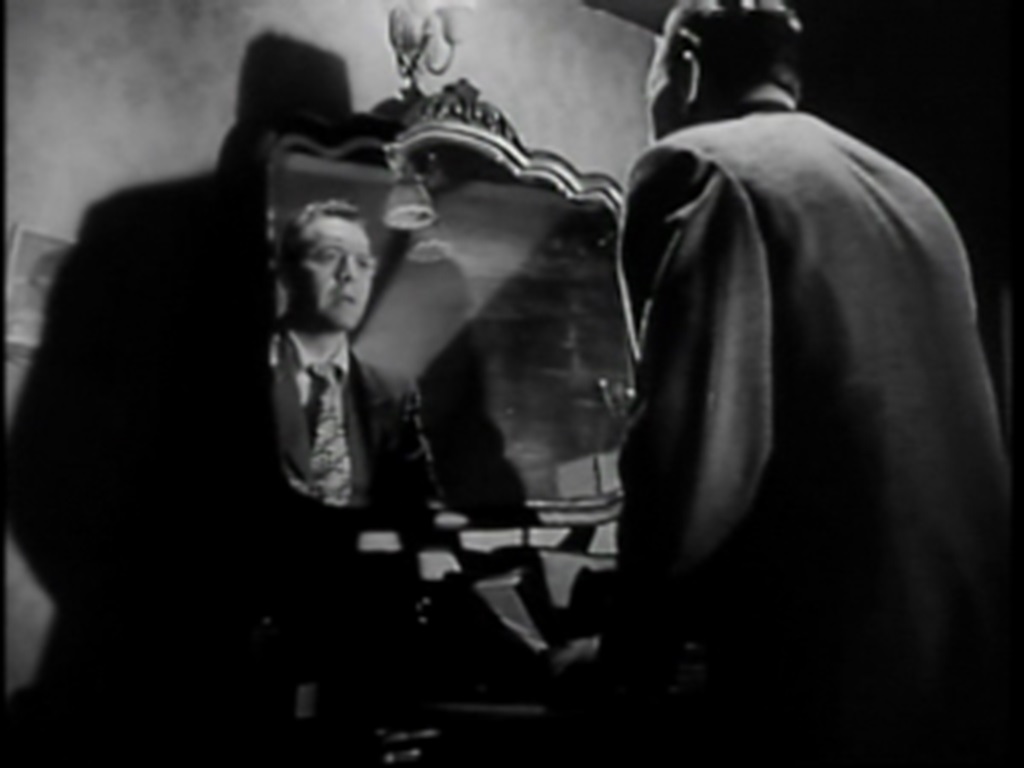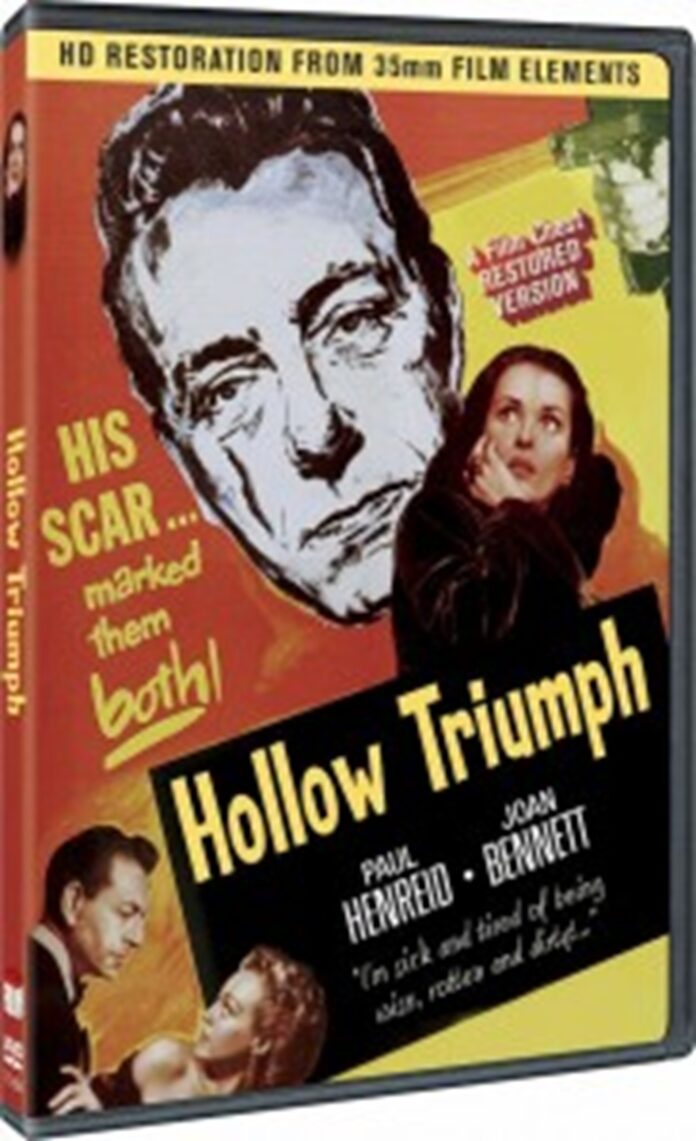Join us as we delve into the haunting beauty of “Hollow Triumph,” exploring its enduring legacy and timeless relevance in the pantheon of film noir. Here are the details.
In the shadowy world of film noir, “Hollow Triumph” stands as a mesmerizing gem of the genre, weaving a gripping tale of deception, crime, and fate.
Directed by the visionary Steve Sekely, this 1948 classic, also known as “The Scar” in the UK, unfolds with a brooding intensity that keeps viewers on the edge of their seats.
As the protagonist, played by the enigmatic Paul Henreid, navigates a treacherous path of mistaken identity and perilous schemes, Sekely’s deft direction plunges audiences into a labyrinth of suspense and moral ambiguity.
With its moody cinematography, sharp dialogue, and taut narrative, “Hollow Triumph” remains a testament to Sekely’s directorial prowess.
His ability to masterfully sculpt a world where shadows hold as many secrets as the characters themselves.
Also Read More: DVD Review: “The Bigamist” (1953)
Hollow Triumph: Quality “B” Movies
In a 2013 Los Angeles Times article discussing ‘B’ movies, film expert Alan K. Rode emphasized their fast-paced, entertaining nature due to their shorter runtimes and lower budgets.
These films often brought together both seasoned and emerging talent, creating a unique blend of creativity.
One prime example of this cinematic synergy is the 1948 film noir Hollow Triumph, recently remastered by Film Chest in HD from the original 35mm film elements.
Hollow Triumph, also known as The Scar in the UK, emerged from the short-lived (1947-48) production arm of Eagle-Lion Films, initially established by British producer J. Arthur Rank to distribute UK films in the US and produce low-budget movies.
Bryan Foy, renowned for his expertise in creating quality low-budget films, led this division. The movie starred the Austria-Hungary-born actor Paul Henreid, famous for his role in Casablanca.

After leaving Warner Bros. to explore freelance opportunities, Henreid embraced Eagle-Lion’s offer to both act in and produce his own film, marking his debut in that capacity.
Despite facing challenges during the HUAC witch hunts, Henreid’s legacy endured as he transitioned to a successful career behind the camera in Hollywood.
When Hungarian director Steve Sekely recommended Murray Forbes’ novel “Hollow Triumph” to Paul Henreid, it sparked the inception of a captivating cinematic venture.
Entrusting Sekely with the directorial reins, Henreid, known for his role in Casablanca, orchestrated a collaboration that would etch the film into noir lore.
With a wealth of experience in German and Hungarian cinema, Sekely’s directorial acumen breathed life into the narrative, complemented by the ingenuity of screenwriter Daniel Fuchs and the visionary cinematography of John Alton.
Alongside Henreid, the film featured Joan Bennett, whose versatility had seen her transition from romantic roles to embodying hard-boiled characters, notably in acclaimed director Fritz Lang’s works.
The ensemble cast, comprising esteemed character actors such as John Qualen, Henry Brandon, and Herbert Rudley, further enriched the film’s tapestry.
While marking the cinematic debut of the future television and film luminary, Jack Webb, in the role of a sad hitman named Bullseye, an intriguing twist considering his iconic future as television’s renowned cop on Dragnet.
John Muller’s Background in Psychology Contributes to Film
In the gripping narrative of “Hollow Triumph,” Paul Henreid delivers a compelling performance as John Muller, a complex character who straddles the worlds of crime and psychology.
Upon his release from prison, Muller reconnects with his criminal associates, embarking on a perilous journey that leads to a high-stakes heist at an illicit gambling den owned by the formidable mobster Rocky Stanwyck.
As the meticulously planned robbery unravels amidst the atmospheric shadows of the dimly lit basement, reminiscent of silent German Expressionist films, Muller and his accomplices find themselves trapped in a web of unforeseen complications.
While Muller and one of his cohorts manage to escape with the spoils, the ruthless retribution of Stanwyck looms ominously, casting a palpable sense of impending danger over the fugitives, who are acutely aware of the relentless pursuit that awaits them.
The film’s evocative portrayal of flawed characters navigating the treacherous underworld and Henreid’s departure from his usual roles adds an intriguing layer of depth to this noir masterpiece.
Deciding to part ways, Marcy opts for a getaway to Mexico while Muller seeks refuge in Los Angeles, reluctantly embracing a mundane office job as mandated by the parole board.
Amidst the monotony, a chance encounter with a mild-mannered dentist triggers a fateful chain of events for Muller.
Mistaken for the psychiatrist Dr. Bartok by the dentist, Muller discovers an uncanny resemblance between himself and Bartok, save for a distinctive scar.

Seizing the opportunity, Muller ventures into Bartok’s world, seducing his secretary, Evelyn, with deceitful intentions of usurping Bartok’s identity.
However, as his scheme unfolds, news of Marcy’s demise and the looming threat of relentless pursuers propel Muller into a race against time.
Determined to expedite his plan, Muller secures a job at Bartok’s workplace and orchestrates a dangerous act of self-mutilation to mirror Bartok’s scar.
Yet, much like the ill-fated heist, this desperate ploy unravels into a series of fatal missteps, sealing Muller’s destiny in an inexorable descent toward his undoing.
The film masterfully intertwines deception, desire, and downfall, culminating in a gripping narrative that subverts the expectations of a classic noir tale.
Sekely’s adept direction and Alton’s evocative black-and-white cinematography infuse “Hollow Triumph” with a visual flair that transcends its modest budget, characteristic of the ‘B’ movie genre overseen by Foy.
Fuchs’ acerbic and world-weary dialogue further enriches the film, serving as a significant strength.
The narrative is replete with situations and plot twists that evoke a “Hitchcockian” essence, reminiscent of Alfred Hitchcock’s television anthology series rather than his cinematic works.
Notably, Henreid’s involvement in directing episodes of these series adds an intriguing layer of interconnectedness.
The film’s “surprise ending” not only reverberates across episodes of the television above series but also finds resonance in an early episode of The Twilight Zone, albeit with a supernatural twist.
Also Read More: Seth MacFarlane Religion: Is He Christian Or Jewish? Family Ethnicity And Origin

